One man’s return to his motoring roots results in a grand Triumph
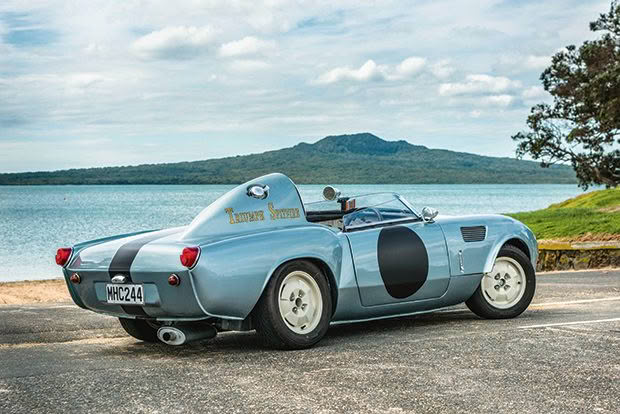
A British sportscar fan, keen to recreate a marque he was involved in developing, nearly stumbles at the last hurdle.
Words: Jane Warwick Photos: Tessa Chrisp & Stephen Grant Perry
When you’re a toddler tucked into the cupboard under the stairs for safety, dosed up on parsnip wine to help you sleep while your mother grabs her Royal Artillery jacket and helmet to go off and discharge her ack-ack gun at the enemy, you’re probably set up from the start to live a life less ordinary.
And when it’s oft pointed out to you — as if you didn’t know — that you share your birth date with Adolf Hitler, there’s always that thing — subconscious mostly — that somehow you must step up; to what, you may not always be sure. But when you grew up in Coventry and suffered through more than 40 poundings by the Luftwaffe, then that particular quirk of birth — those random 24 hours that could have landed you earthside on the 19th or the 21st of that month instead — then sharing a day with a man whose actions led to your city being strafed is not a day many of those citizens forget, nor will let you — a sometimes wearisome “joke”.
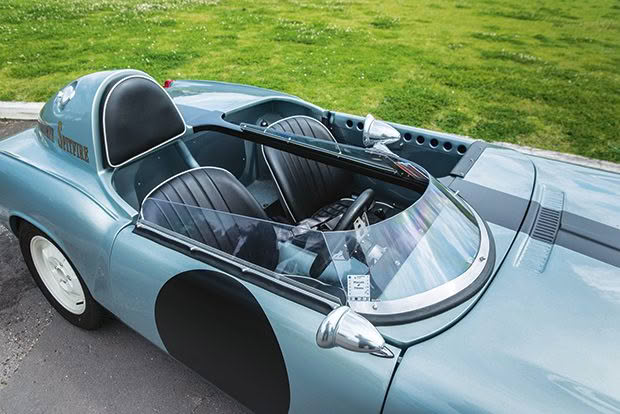
So, Morley Faulkner was augured to live his life just outside the box. The things he did were not astonishing, but they were far from just ordinary. Despite leaving school with no other certificate to his name than his already existing birth certificate (with that damnable date), Morley got a job as an apprentice toolmaker with Standard Triumph, now considered one of Britain’s iconic motor works. It wasn’t his favourite job, but he persevered with a five-year apprenticeship, then wrangled a transfer to research and development and eventually sidled through the door of the experimental department building and into developing competition cars and prototypes.
He and his mates keenly followed the racing circuit, and then Morley upped the ante and began to drive racing cars himself, starting with Lotus marques. He did his up-the-ante thing again and bought a Formula 1 Cooper once owned and raced by Stirling Moss; Morley upgraded it with a V8 engine.
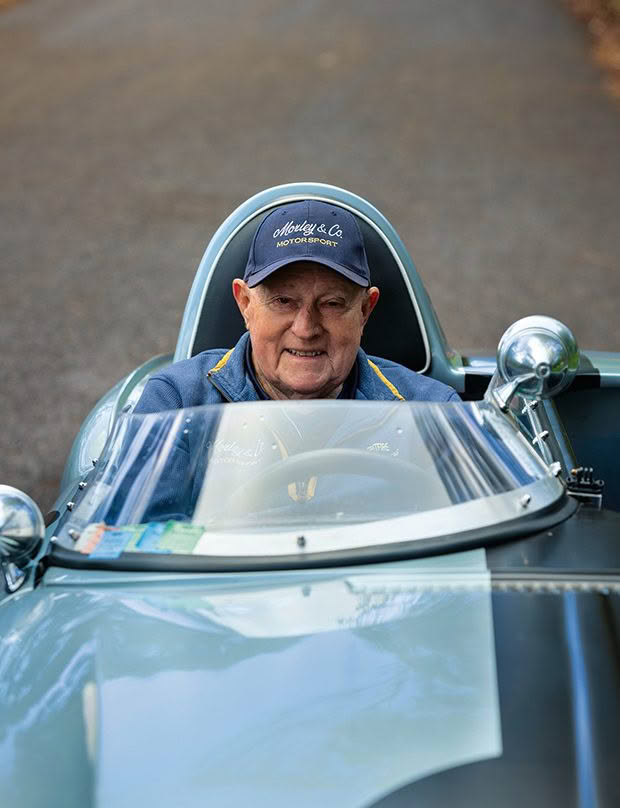
He was young, he was restless, he immigrated to South Africa. He went to Zimbabwe, he went to Malawi and, after 10 years, immigrated to New Zealand. To get here, he hitched a ride aboard his mate’s 24-foot yacht, and they sailed from Africa to the Seychelles, battling a four-day cyclone on the way. That was it for Morley and the sea — he caught a plane the rest of the way to Aotearoa.
He landed up in Kaukapakapa, just north of Auckland and got an engineering job in a dairy factory in Helensville, just down the road. He met a girl called Karen, who worked in international freight forwarding.
They raised a family and had lots of adventures. He retired. He needed a project. He was tipped off about two Triumph Spitfires — both barn finds — that were for sale in Kerikeri. This sounded to Morley like a good project. Karen was not so sure.
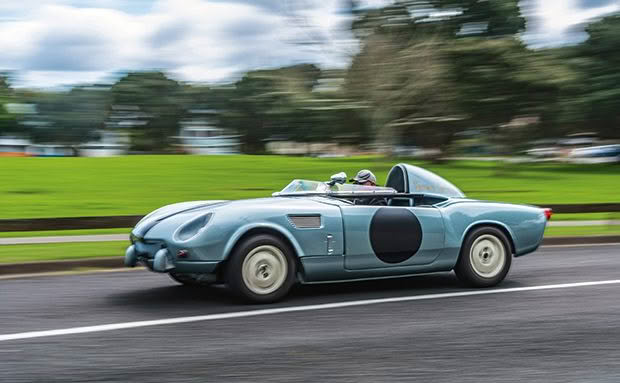
Two trucks, two trailers and a 12-hour round trip later, they were his. One look at the two dishevelled wrecks and Karen was even less sure, but — you know — that for-better-or-for-worse clause.
Then an Auckland Owners Triumph Club member — a group to which Morley, of course, belonged — told him of a man in Hamilton who had immigrated to Aotearoa with a container of race car spares to service the Triumph GT6 he was going to build, but had been talked into buying a yacht instead. A container load of parts was a gold mine, which Morley quickly claimed.
Still in north Auckland but now in rural Albany on a family spread that is big enough for a workshop for two cars and with room to park others alongside, Morley started to plan. He was initially going to build a replica Le Mans Triumph Spitfire, but then he remembered the Triumph Macau, built for a Hong Kong-based businessman, Walter Sulke, who ordered a one-off special racing version of the Triumph Spitfire to race in the first-ever Macau Grand Prix in 1954.
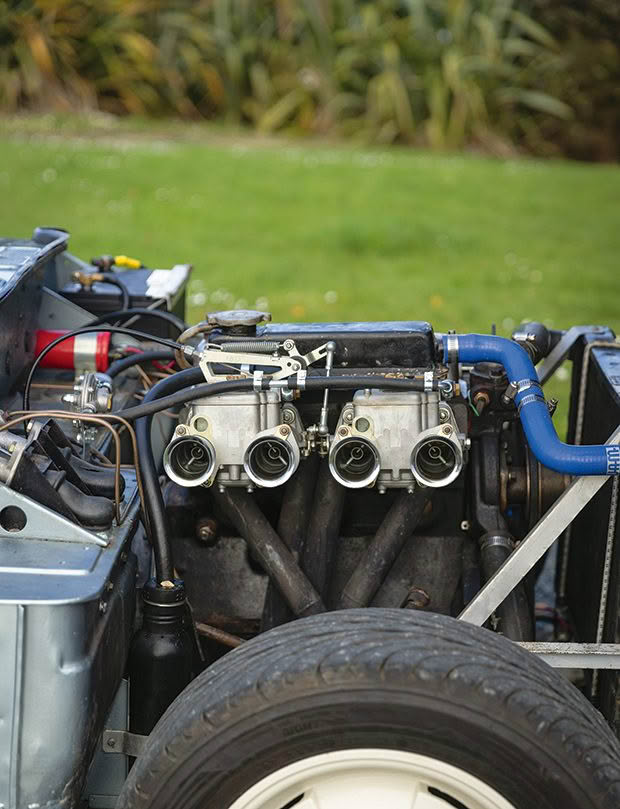
Morley was involved in that vehicle’s original development and construction back in those Coventry days. The car had the same rear tub and wings to the standard shape as previous Le Mans Spitfires, but as a special request, Sulke wanted the vehicle to have a hump, as was then seen on a D-type Jaguar.
This was the car Morley would attempt to recreate and race.
He made a mould from a combination of the two barn-find Spitfires, which turned out a fibreglass body. He dropped in an old Spitfire engine that had sat under someone’s workbench since the 1970s. It was an excellent find and fit, having originally been built for the then Benson & Hedges race series and had no shortage of horsepower.
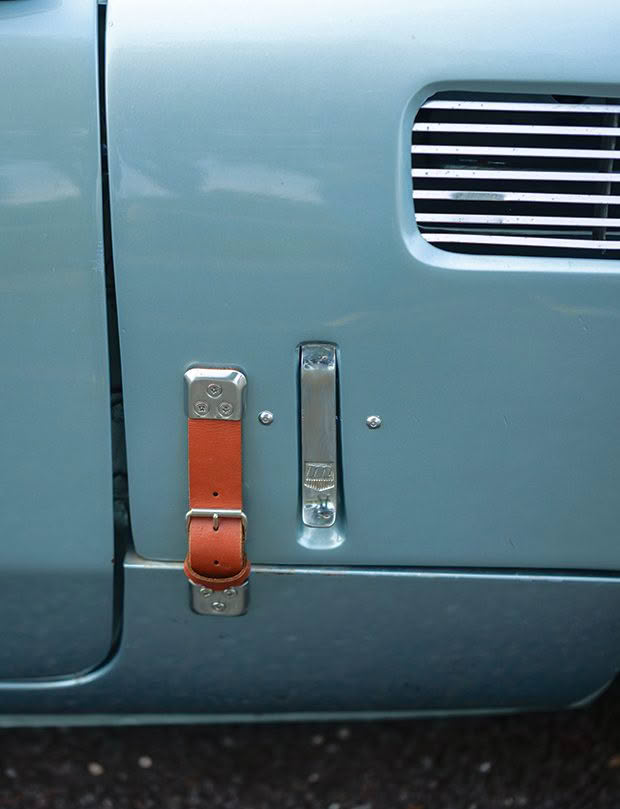
Of course, it wasn’t as easy and straightforward as a three-sentence paragraph; it took two years of labour and research, and the hardest bit was the fibreglass hump. If it weren’t for the help of his son Piers when he wasn’t working at his events business and who is also a car enthusiast, it would have taken much longer.
“If I made that fibreglass hump once, I made it two dozen times. I would finish it and be satisfied with the outcome, and then in the night, I’d wake up wondering why on earth I thought that was right. So often, I told Karen I’d done it, but after a sleepless night, I’d think, ‘Nah!’ and cut it off again. But eventually, it was just right.”
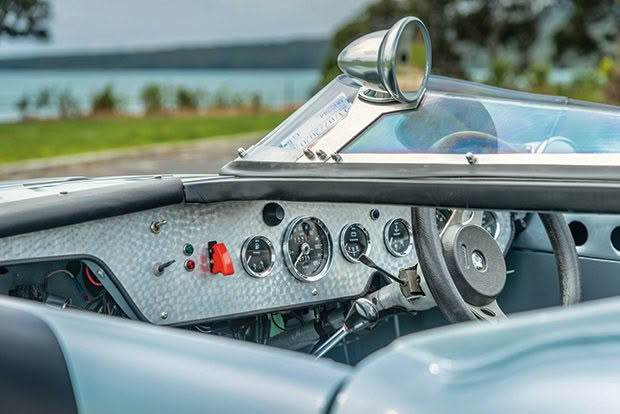
He’d worked hard getting the car together and was justifiably proud, but when he went to get it certified, he was in for a shock. Armed with his $172.50 fee, he proudly rolled up to the certifier. But the inspector was having none of it.
“He wanted to have a look underneath, and my son and I said, ‘Okay, we’ll flip it over.’ But the certifier said not to bother; there was no need as the warrant was failed. He also told me I wasn’t qualified to work on this car. I just stared at him. Me? Not qualified? I’d been on the original design team. I was pretty sure I had insider knowledge like no other. We went elsewhere and were easily passed. I later heard that the first inspector had been stood down by the NZTA.

“If someone was being picky, they might note that the fuel cap on the hump is of a three-inch diameter instead of four. But that was all I could find these days.
“Certification would not allow racing seats, so the originals had to be retained. I am also pleased with the Le Mans lookalike alloy wheels I imported from England. If I ever had doubts about the integrity of the project and worried if I did do a good job, I only have to switch on the engine at every race meet — that deep rumble is perfect.”
STRAIGHT TO THE TOP
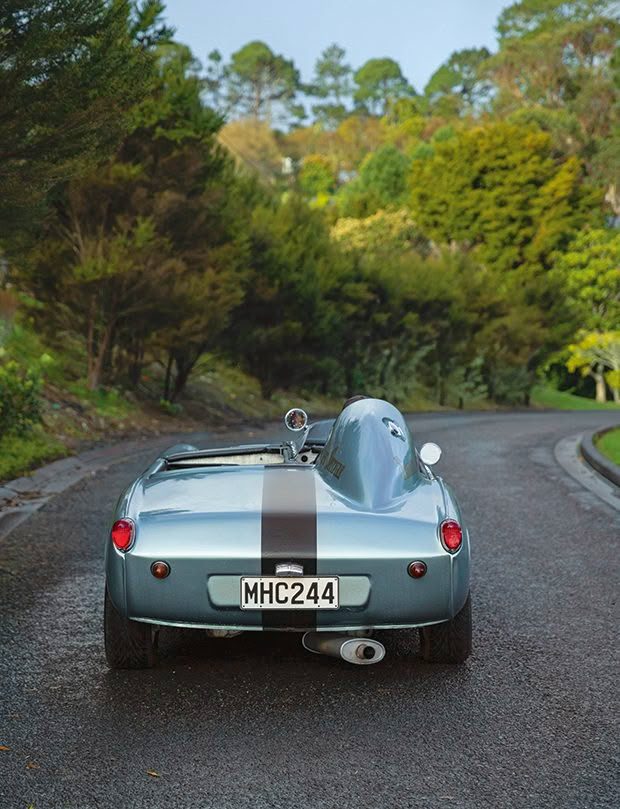
Although Morley has spun his car around the track at Hampton Downs, it is now hill climbing (aka hillclimbing) competitions that he and his son Piers are more likely to participate in.
The first official hillclimb took place in France over 120 years ago, so the sport has a serious pedigree and is one of the oldest forms of motorsport. Drivers compete against the clock in individual runs on an uphill course with any age and type of vehicle, although there are strict safety rules regarding the car and the driver’s clothing. There used to be a premier international event — Race for the Sky — in Queenstown, but, nowadays, most events in New Zealand are held on private roads.
Love this story? Subscribe now!
 This article first appeared in NZ Life & Leisure Magazine.
This article first appeared in NZ Life & Leisure Magazine.
